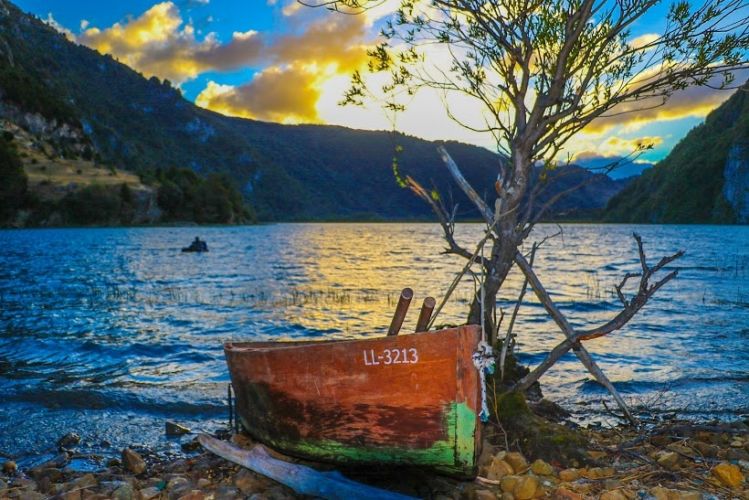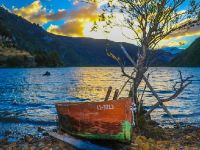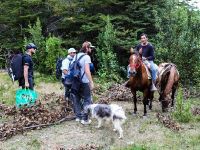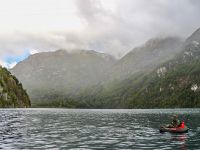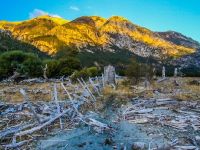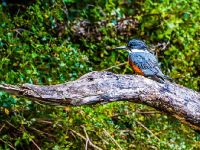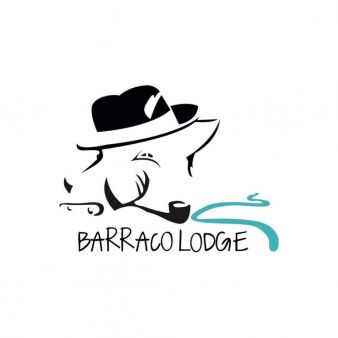Quisiéramos compartir el primer artículo de una serie que publicará Tim Norman, fundador de Emergentt Expeditions. Junto a Tim trabajamos para entregar una experiencia de pesca lo más inspiradora posible e inolvidable. Para saber más sobre otros artículos puedes ir directamente a http://www.emergentexpeditions.com/blog/
Coming from the northern hemisphere I typically think of our Fall season as the time of the year where we can experience wild temperature variations in a 24 hour period with dry sweltering days giving way to erratic wet and stormy weather. As you know we experience these changes in the season following the end summer as the month of September moves onward into October andNovember. The Fall season in Patagonia Chile can be thought of in the same respect as our Fall only it is happening on the flip side of the calendar, with the month of March kicking off “la temporada de otoño”.
At the end of March 2016 I traveled down to the Los Lagos Region-X of Chilean Patagonia to fish withthe Matapiojo Angler team. Matapiojo Anglers is a small group of my Chilean friends that live, guide, and raise their families in the amazing place that is northern Patagonia Chile. The Matapiojo AnglersLodge is located on the banks of the Rio Futaleufú in a small area called Puerto Ramirez, Chile. This area is located inland roughly halfway between the Pacific Ocean and the Chilean / Argentinian mountainous border at the southern latitude of -43.4 Degrees South.
Due to the fact that the country of Chile is extremely long and narrow, (2,672 miles from the northernto southern borders) it could be comparatively be laid out in the northern hemisphere along the Pacific coast from southern end starting south of Tijuana on the Mexican Baja Peninsula and running continuously all the way up though USA and BC to just north of where Anchorage, Alaska is located. Comparatively you could equate the Matapiojo Anglers location of operations with similar northern latitude and climate of Steamboat, Oregon (+43.4 Degrees North) where the infamous North Umpqua River flows.
Flying into Santiago de Chile on an overnight flight and landing in the comfortable heat of the end of the summer in Chile’s capital city. It was a welcome change from my home base of Portland, Oregon where we had experienced five months straight of continuous rain. That was really just the start of my journey. Ultimately this was just a short layover, with enough time to collect my bags, drop them off at the LAN Chile ticket counter and mill around the modern airport, while I waited for my last flight to board and take me to Puerto Montt, Chile. A layover in Santiago on your way down to fish Patagonian waters is similar to a layover in Los Angeles on your way to Montana for a fishing trip. One difference is that the airports in Chile are more pleasant than LAX. Ultimately it's thrilling to think about what exciting culture and people could be encountered in these mega cities with lots of history and millions of residents, but truthfully as fly fishers we are not meant to linger for too long in these metropolitan places when the lush rivers of Patagonia are waiting.
While grabbing some lunch in the airport I just happened to run into one of my fishing partners, Coke that I would spend the next week with. Coke was also traveling back to his home town of Puerto Varas but on a different flight following a last minute trip to see his family in Santiago before our departure. What a small world we told each other as we celebrated the commencement of our trip with a round of cold Chilean Cristal Lagers. Within a few short hours I had landed in Puerto Montt and was pick up by Matapiojo Anglers Owner and Guide, Francisco. From the modern El Tepual Airport we drove the back way on a freshly paved road though the rolling hills of fertile pasture lands and into the picturesque town of Puerto Varas. We stopped by the supermarket to stock up on a week’s worth of food, wine and most importantly Pisco. That evening we met up with Coke, loaded Francisco’s truck and headed off together to board a overnight ferry to Chaitén. (Typically Matapiojo Angler clients stays one night in Puerto Varas and then flies down to Chaiten the following morning where your group is pick up at the airport and taken to the Matapiojo Anglers Lodge by the staff). On this trip we decided with the amount of gear and people we had it would be more of an adventure to take the ferry. After a couple of celebratory Oregon microbrews and fresh empanadas onboard the ferry and less than a couple hours of quality sleep we docked just outside of Chaiten, Chile to a cool coastal drizzling rain where it was apparent that Fall had arrived in Patagonia.
This expedition was formed with basis of exploring some new possibilities for fishing in the vast area of the Matapiojo Anglers operational zone. Based on the weeks weather forecast our group planned to start the week off fishing some remote lakes outside the town of Futaleufú high in the heart of the Andes mountain range. Lago Noroeste and Lago las Rosas were unknown to all three of us and besides our head guide, Nestor who we met with in Futaleufú.
There was teasing thoughts of “grande farios” to be caught in Lago Noroeste implanted by Nestor with his big eyes and smile, but truthfully we had little to no expectations other than to have a great experience with eachother fishing and exploring! Like most of the “Lago Remotos” that I have explored in the backcountry of the northern hemisphere these lakes differed little in the fact that they were a real bitch to get to. We were all pleased to have a couple pack horses and a old hand build McKenzie style drift boat waiting to help us back all our gear in. Before we knew it the end of the first day of this adventure was upon us. We rowed across the lake and made our modest camp along the shore and strung up our fly rods in preparation to ply the stunning waters. There is only one “ranch” on this lake and it is there solely as a basic seasonal cook shack for the family of cattle ranchers that have owned these lands since this region was settled. At the time of our visit the ranch was empty so we had the whole lake to ourselves, of course with access permission granted by the landowners.
As in any exploratory fishing trip, the learning curve is high. After a two hour evening fishing session from the drift boat and float tubes we had come up with a handful of quality rainbow trout. That didn’t quite tip the scales to “grande” in our books. The potential was there with the striking quality of the clean, and cold waters. All we had was time to enjoy the fruits of our labor and learn more about catching fish in these particular lakes. That first night under the stars we all put a pretty good dent in our beer, wine, and pisco supplies while waiting for the full moon to rise over the mountain sides that surround the lake. We made a plan to rise the next day and fish the early morning on Lago Noroeste before making the 30 minute trek to Lago las Rosas to fish there for the remainder of the day.
The first person to rise the next morning was our guide Nestor and before the rest of us could crawl out of our tents he, in the style of true patagonia hospitality and hard work he had herba matte, hot coffee and a rich homemade breakfast ready for all of us to enjoy. That morning Lago Noroeste proved to be a challenge once again and produced a handful of 15-17 inch rainbows for the group in a couple hours of fishing. We warmed up by the fire as the cold lake water and damp fall air chilled our core before we packed a small amount of gear to take to Lago las Rosas for the rest of the day.
On the walk to Lago las Rosas the sun appeared over the steep terrain and before we reached the shoreline we were all sweating and shedding our layers. Lago las Rosas is smaller and more remote than Lago Noroeste but truly more spectacular since is it surrounded by a grandiose vistas of two separate mountain ranges flanking the lake and has multiple cliff faces dropping into the lake. The fishing there was more promising and soon all of us had hooked into large trout that got us fired up and kept us wanting more. By noon we had fished the smaller portion of the lake that had an accessible shoreline and we were all ready to experience more.
The float tubes were pumped up and an old handmade wooden boat that was tied to a lonely old tree was considered for “rental”. To rent this mighty three meter long craft it required the whole team to work together to empty out the water that had collected in it from the waves lapping over the stern. A long stout log, a big rock and some teamwork did the trick and allowed us to lift the bow and slowly dump out the water. The boat was made of shaped plywood and had hand carved oars set in hand forged steel oarlocks. Two small bench seats provide just enough room for half of our group. After a short test float she was deemed seaworthy by myself and our brave guide Nestor.
After fishing with Nestor for a couple of years he has become more of a highly reliable and responsible friend than a guide, and often we both fish together for most of the day, taking turns on the oars. Myself always taking the shorter shift on "the sticks" after he efficiently catches another fish with me wondering how he does this hard work all day every day in the sometimes unforgiving Patagonia winds. This place was too special to not share with a friend and so Nestor and I pushed off and set out around the shore of the lake for the next 5 hours taking turns fishing and rowing. Constantly we centered up to expertly not flip this narrow boat in the lake's sometimes choppy waters. Many quality fish were caught on that little voyage and truthfully it was a glorious part of our entire trip. More so because of the company of the Matapiojo team and for the resounding mystique of fishing new waters. To me after obsessively fly fishing for over half of my life I get the most excitement out of fishing new waters in new places. That is why I love what I do at Emergent Expeditions where we are working hard to develop new destinations for other people to explore an channel that new water energy that comes along with visiting an emerging destination.


